Sex, sequins and rock and roll: 11 unashamedly queer moments from David Bowie

Friday, January 10, marks three years since the tragic death of icon David Bowie.
He died back in 2016, a tragic day for everyone but particularly for people from the LGBT+ community. Bowie has been talked about often as a queer icon, coming out early in the ’70s as both gay and bisexual and giving us the space to be out, loud, and proud.
He would later declare himself a ‘closet heterosexual’ in a 1983 interview with Rolling Stone and would go on to marry two cisgender women in Angie Barnett and model Iman, but the impact and influence Bowie had on both gender, sexuality and – perhaps more importantly – expression still stand true today.
In honour of the anniversary of his death, here are ten unashamedly queer moments from David Bowie:
1. John, I’m Only Dancing.

(Richard E. Aaron/Redferns via Getty Images)
A quintessential bi anthem, this song is a single released by Bowie in 1979. The lyrics say it all, really:
Well, Annie’s pretty neat
She always eats her meat
Joey’s almost strong
Bet your life he’s putting us on
Oh lordy, oh lordy
You know I need some loving
Move me, touch me
John, I’m only dancing
She turns me on
But I’m only dancing
She turns me on
Don’t get me wrong
I’m only dancing
Clearly David Bowie is sexually attracted and enticed by both Annie and Joey. He then ends up dancing, presumably, with Annie and is telling jealous John not to worry because dancing is just dancing. How could this be anything less than a bisexual anthem?
2. Ziggy Stardust.
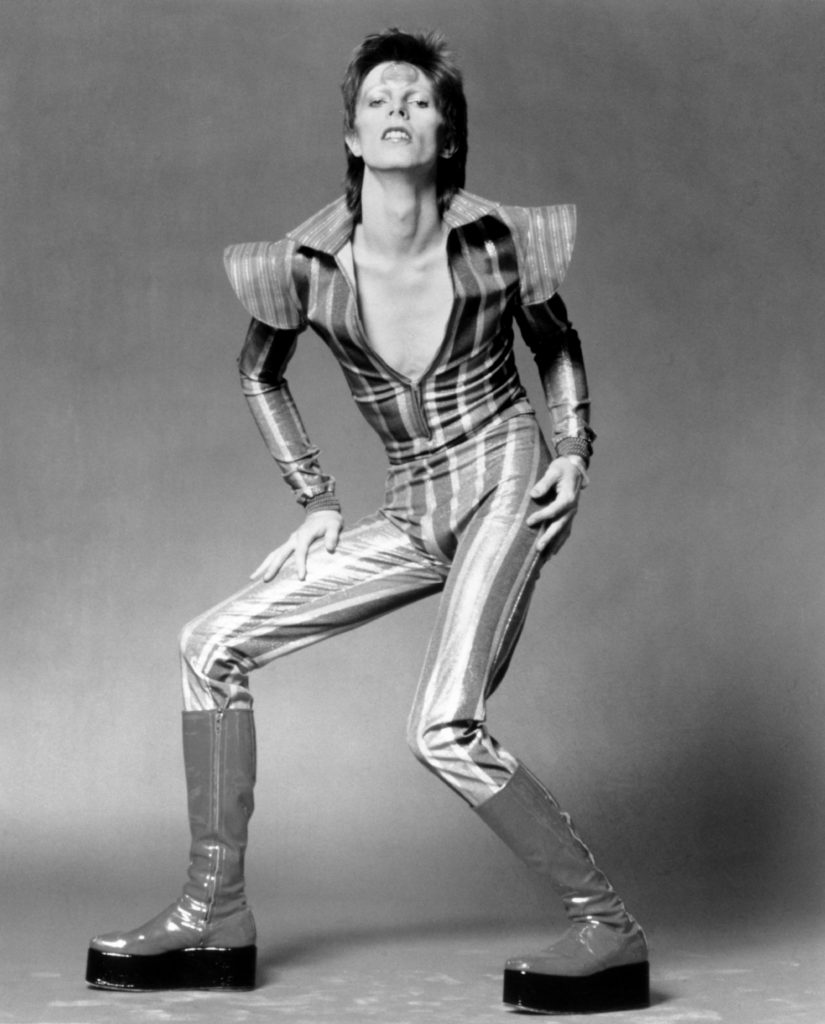
(Michael Ochs Archives/Getty Images)
Queer icon Ziggy Stardust is what is most often equated with David Bowie. Ziggy is Bowie’s alter ego, created in 1971, and was featured in one of Bowie’s most famous albums: The Rise and Fall of Ziggy Stardust and the Spiders from Mars.
Everything about the character, from the way he dressed to the way he acted on stage, was a step forward for queer representation and influenced many of our queer icons today. He redefined sexuality. Bowie once said, “Offstage, I’m a robot; onstage I achieve emotion.”
3. Dating Dutch transgender actor Romy Haag.

(Pictorial Parade/Getty Images)
In 1976, Bowie moved to Berlin to be with his lover and muse, Romy Haag. She was a famous transgender woman and cabaret performer. Haag influenced Bowie’s ‘Boys Keep Swinging’ video, where Bowie appears as a chorus of drag queens.
4. Making bisexuality a ‘thing’.

(David Warner Ellis/Redferns via Getty Images)
David Bowie’s coming out as ‘gay’ in 1972 was iconic, namely because celebrities weren’t doing that at the time. It was the year of the first Gay Pride march and homosexuality had been legal for barely a minute. He changed his tune in 1976, when he told Playboy magazine that he was bisexual, not gay, which likely made sense to the public as he was still married to his first wife Angie Bowie.
After Bowie’s death, many hailed him as a bisexual icon and as one of first people to show them that you could be bisexual. For the first time, it was possible for people to be bisexual in public – and only because of Bowie. He made it a ‘thing’ like few others in the mainstream had before, and thank God he did.
5. “You’ve got your mother in a whirl, she’s not sure if you’re a boy or girl.”
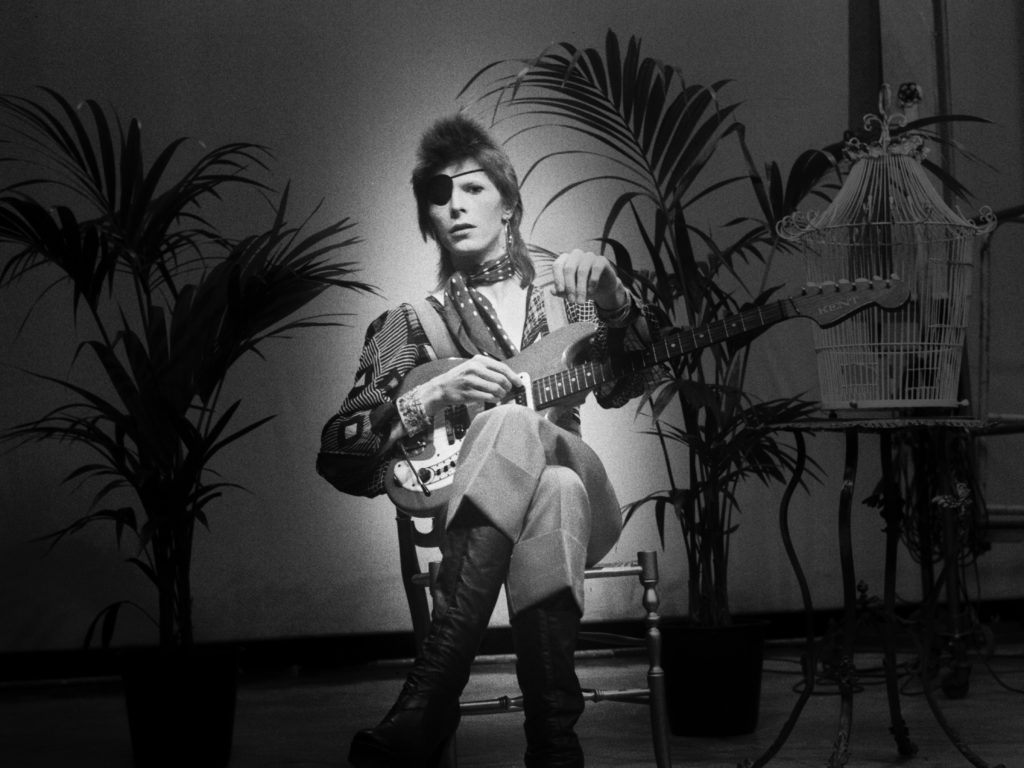
(Gijsbert Hanekroot/Redferns via Getty Images)
From the beginning of ‘Rebel Rebel’, Bowie is giving us a nod to drag queens and androgynous fashion. Bowie’s style throughout his career can be summed up by this line, dressing in eccentric and alternative clothes that subvert gender stereotypes and changed the course of queer culture forever. Not only that, it’s an amazing song too.
6. When David Bowie wore a mime costume to a club in 1968.
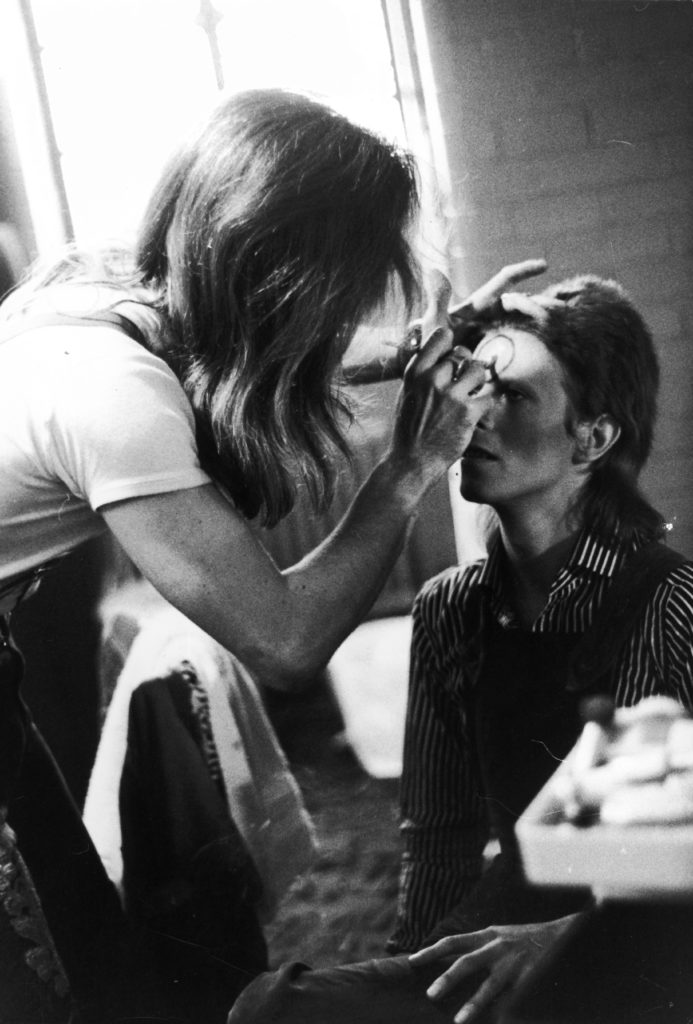
(Daily Express/Hulton Archive/Getty Images)
Bowie was no stranger to experimentation – of makeup and costume of course. He went on a night out one glorious May day in 1968 to Covent Garden’s Middle Earth Club with “mime” makeup on. But, what is this if not a modern precursor to the drag makeup we are seeing today? Drag queens have a long history dating back centuries but Bowie openness and queer makeup style definitely had a hand to play.
7. When David Bowie draped an arm around Mick Ronson in the summer of 1972 during Top of the Pops.
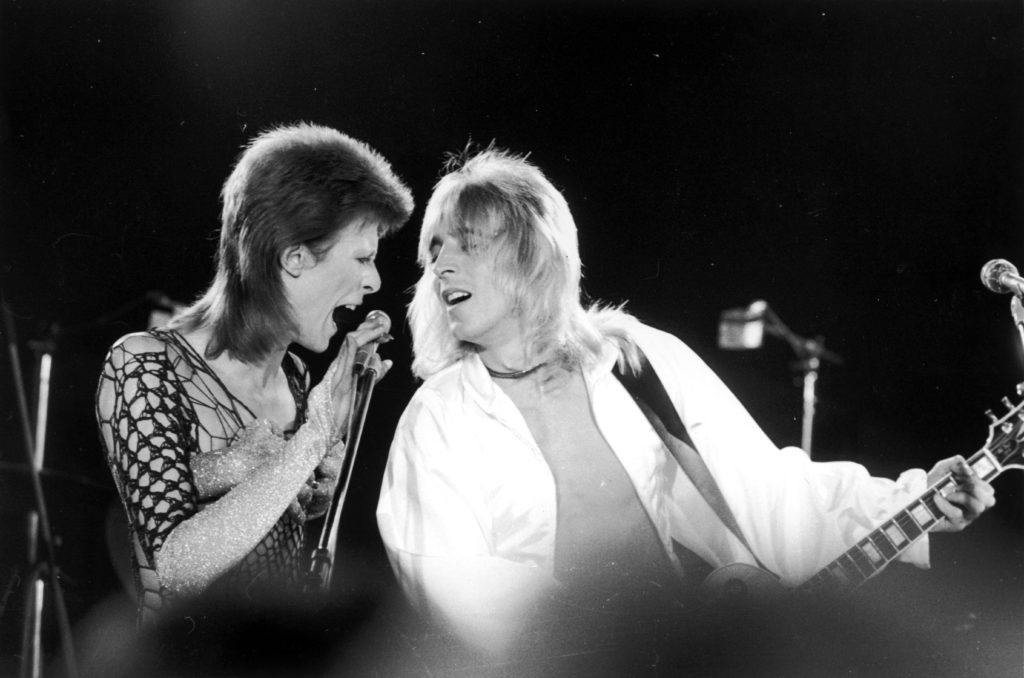
(Jack Kay/Daily Express/Getty Images)
David Bowie casually put his arm around his guitarist’s shoulders during the BBC’s most influential music show. It caused chaos. As HuffPost writes, “It was rather a dangerously queer to do.”
At the time, Bowie was already rocking out as Ziggy Stardust but it wasn’t this alter ego that caught people’s attention. By putting his arm around Ronson, he “established himself as a rebel.” This was a moment that made people see gender and sexuality differently, benefiting the queer movement to this day.
8. “Make the best of every moment. We’re not evolving. We’re not going anywhere.”
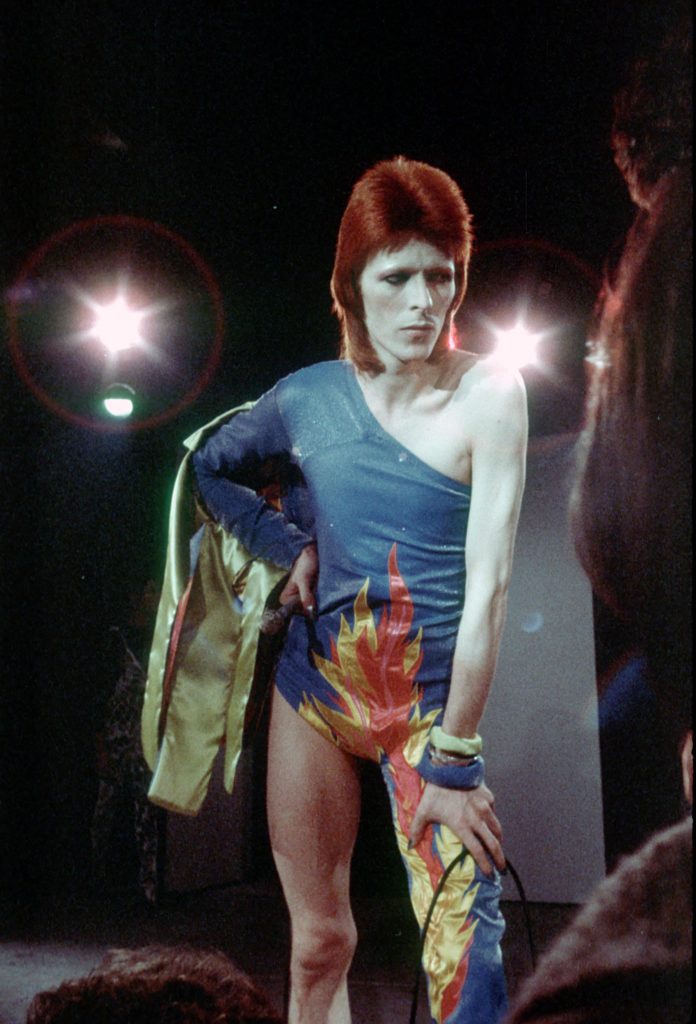
(Michael Ochs Archives/Getty Images)
In a 2004 article that he wrote for Esquire, Bowie gave a list of what he’d learned. This was one of the things he said he’d learned over the years and, while perhaps unintended, it is a great queer moment from the iconic singer. This quote is telling us to live our best queer lives at every given opportunity, just as he often did.
9. Tapered trousers, patterned suits, shoulder pads and silk printed polos.
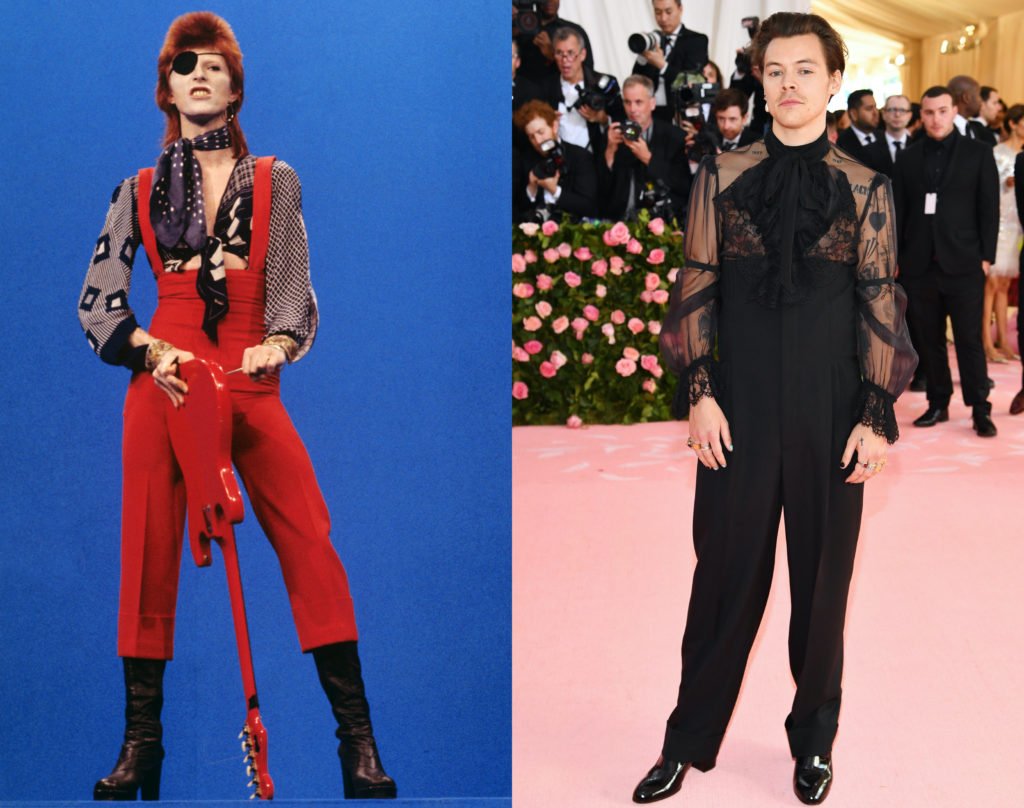
(Gijsbert Hanekroot/Redferns via Getty/ANGELA WEISS/AFP via Getty Images)
Bowie’s fashion choices shaped the latter half of the 20th century, especially when it came to queer styles and outfits. He pioneered things like tapered trousers, patterned suits, flares, shoulder pads, floral coats, skin-tight clothes and silk-printed polos.
The style of these clothes are things we see emerging and re-emerging throughout the years, particularly on the LGBT+ icons that we have now. A prime example is Harry Styles – just looking at the outfits he wears on tour, in public, and on the cover of magazines (see Rolling Stone 2019), there is undoubtedly a Bowie influence in there.
10. When David Bowie performed ‘mock fellatio’ on stage.
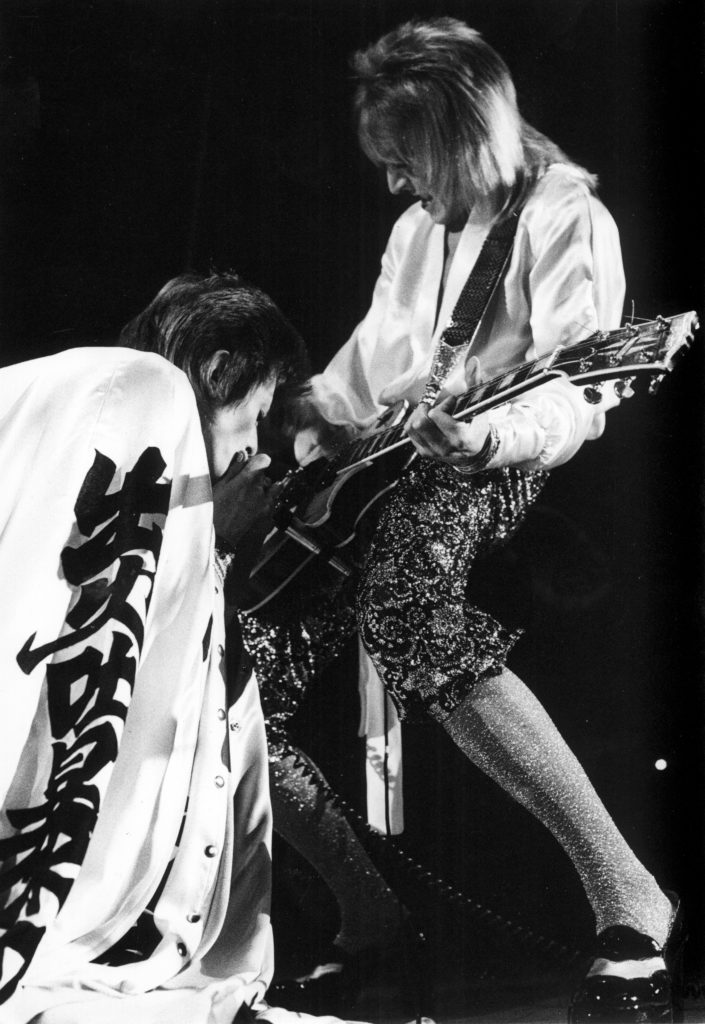
(Gijsbert Hanekroot/Redferns via Getty Images)
Bowie was known for being completely open about his sexual exploits and experiences. So, it comes as no surprise that he commonly would mimic sexual acts while on stage, including performing “mock fellatio on stage with guitarist Mick Ronson”. Yes, that’s the same Mick Ronson that caused an outrage in the nation after Top of the Pops.
Darryl Bullock says of the stage performances, “This did not go unnoticed,” and is one of the reasons Bowie is considered to be “directly responsible for the proliferation of lesbian, gay, bisexual and trans musicians we have today.”
11. David Bowie came out as gay.

(Michael Ochs Archives/Getty Images)
Obviously, the queerest thing you can do is officially as gay, which is what Bowie did in 1972. He told Melody Maker, “I’m gay, and I always have been, even when I was David Jones.”
People saw him “as a pop-culture pathbreaker, making it easier for others to come out.” Critic Andrew Kopkind said he was “an authentic gay superstar, authentically a superstar and authentically gay at the same time – for the first time in our culture since Oscar Wilde.”
There is much debate about whether Bowie was gay or bisexual or queer or straight but a label is unimportant in comparison to the amazing strides he made towards queerness and representation for the LGBT+ community.

